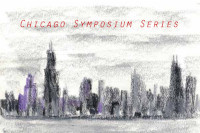University of Maryland
When we think about improving our teaching, we often focus on how to choose the content, create elegant presentations, or deliver engaging demonstrations. But since teaching and learning is an interaction between the instructor and the instructee, we really need to consider both ends of the interaction. When we don't explicitly discuss how people learn and understand, we tend to design our instruction based on our tacit assumptions. These may contain serious misconceptions and can lead to well-meant but ineffective teaching. In the past few decades, researchers in psychology, sociology, linguistics, and neuroscience have begun to learn a great deal about how people think and behave. Some of it is quite surprising, counterintuitive, and compelling. In this talk, I will discuss some of what has been learned about how people think and the implications for our teaching of science and mathematics.
Edward F. Redish is a Professor of Physics at the University of Maryland in College Park. He received his undergraduate degree Magna Cum Laude from Princeton University and his Ph.D. in theoretical nuclear physics from M.I.T. in 1968. He has been at the University of Maryland ever since, and served as Chairman of the Department of Physics and Astronomy there from 1982-1985. His research in nuclear theory emphasized the theory of reactions and the quantum few-body problem. As a nuclear theorist he served on the national Nuclear Science Advisory Committee and served as Chair of the Program Committee for the Indiana University Cyclotron.
Since 1982 he has been actively involved in the subject of physics education using the computer. He was founder and co-principal investigator of the Maryland University Project in Physics Education and Technology (M.U.P.P.E.T.) and Comprehensive Unified Physics Learning Environment (CUPLE). His current research effort is devoted entirely to physics education.
Prof. Redish has received awards for his work in education from the Washington Academy of Science, the Maryland Association for Higher Education, Dickinson College, Vanderbilt University, and the Robert A. Millikan Medal from the AAPT. He was US Representative to the International Commission on Physics Education from 1994-2002. He was the editor of the Physics Education Research Supplement / Sectionto the American Journal of Physics from its inception in 1999 to 2004. He is a member of the Activity-Based Physics development team, responsible for the creation of The Physics Suite for John Wiley and Sons, Inc which includes the physics text, Understanding Physics, by Cummings, Laws, Redish, and Cooney, a revision of the popular text by Halliday, Resnick, and Walker that takes into account what has been learned from physics education research.
Currently Prof.Redish is doing research on student epistemologies and expectations and student difficulties with the use of mathematics in physics. He is co-PI of the project studying the algebra-based introductory physics class entitled: Learning to Learn Science: Meta-learning in introductory physics for bioscience majors with David Hammer.

